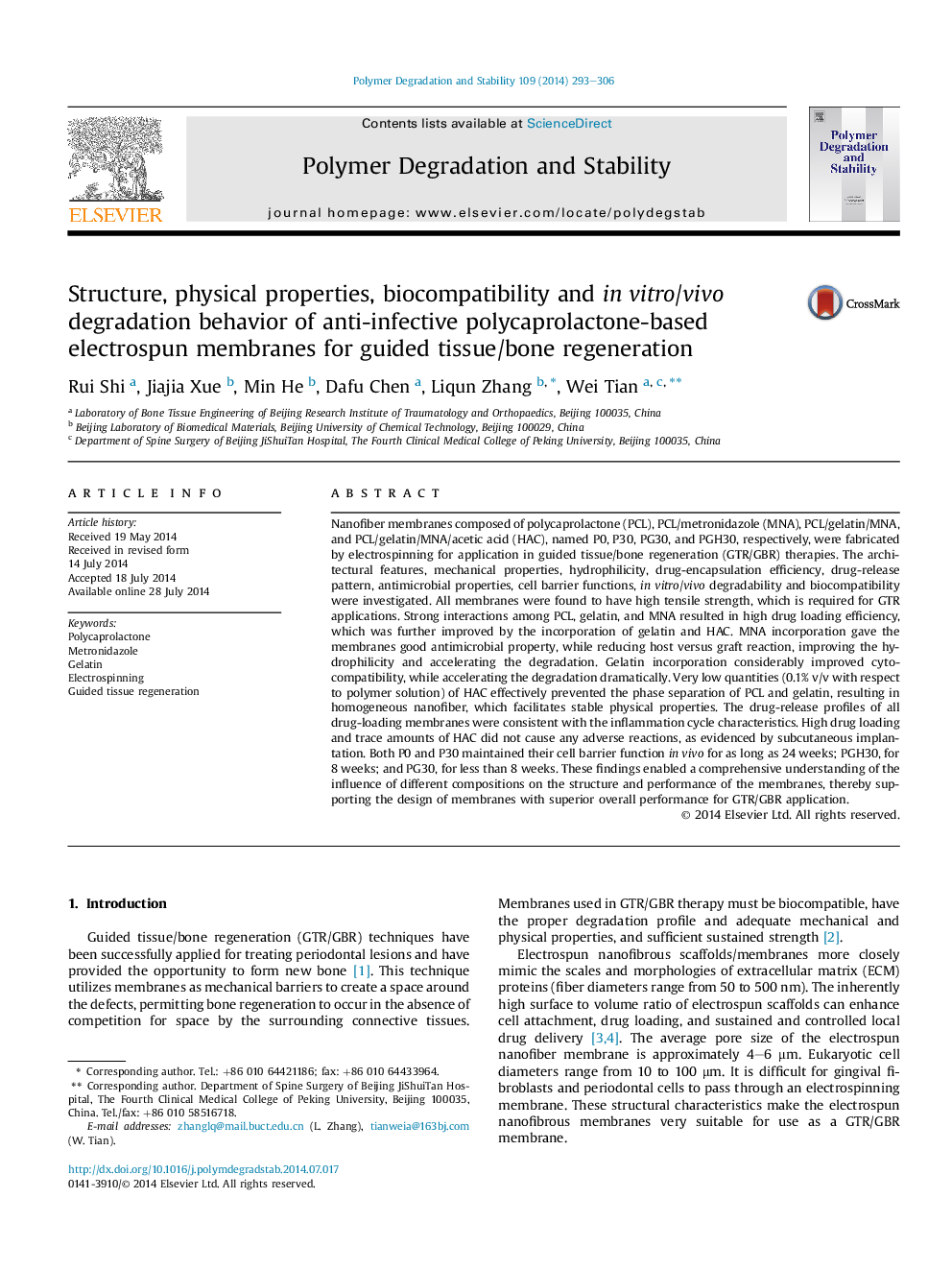| Article ID | Journal | Published Year | Pages | File Type |
|---|---|---|---|---|
| 5201740 | Polymer Degradation and Stability | 2014 | 14 Pages |
Nanofiber membranes composed of polycaprolactone (PCL), PCL/metronidazole (MNA), PCL/gelatin/MNA, and PCL/gelatin/MNA/acetic acid (HAC), named P0, P30, PG30, and PGH30, respectively, were fabricated by electrospinning for application in guided tissue/bone regeneration (GTR/GBR) therapies. The architectural features, mechanical properties, hydrophilicity, drug-encapsulation efficiency, drug-release pattern, antimicrobial properties, cell barrier functions, in vitro/vivo degradability and biocompatibility were investigated. All membranes were found to have high tensile strength, which is required for GTR applications. Strong interactions among PCL, gelatin, and MNA resulted in high drug loading efficiency, which was further improved by the incorporation of gelatin and HAC. MNA incorporation gave the membranes good antimicrobial property, while reducing host versus graft reaction, improving the hydrophilicity and accelerating the degradation. Gelatin incorporation considerably improved cytocompatibility, while accelerating the degradation dramatically. Very low quantities (0.1% v/v with respect to polymer solution) of HAC effectively prevented the phase separation of PCL and gelatin, resulting in homogeneous nanofiber, which facilitates stable physical properties. The drug-release profiles of all drug-loading membranes were consistent with the inflammation cycle characteristics. High drug loading and trace amounts of HAC did not cause any adverse reactions, as evidenced by subcutaneous implantation. Both P0 and P30 maintained their cell barrier function in vivo for as long as 24 weeks; PGH30, for 8 weeks; and PG30, for less than 8 weeks. These findings enabled a comprehensive understanding of the influence of different compositions on the structure and performance of the membranes, thereby supporting the design of membranes with superior overall performance for GTR/GBR application.
